Use of Agreen agrofiber for cultivating eggplants
Eggplants are grown in Ukraine, but their popularity
is not high. This is explained by the fact that the process of planting
eggplants is time-consuming and various diseases often destroy healthy fruits.
Breeders have already bred varieties of eggplant that are resistant to pests,
so more summer residents and farmers began to plant them. A correctly selected
variety of eggplant will help you get a good harvest. When choosing, you need
to take into account the quality of the soil and weather conditions. In order
to get a harvest as early as possible, it is recommended to use agrofiber. With
the help of agricultural fiber, you can protect your crops. This material is
used by farmers throughout Ukraine. Today, agrofiber is popular among summer
residents and gardeners. Every year, more and more buyers take advantage of
this covering material.
Basic characteristics of Agreen agricultural fiber:
- Non-woven synthetic
material. Allows you to lay agricultural fiber directly on plants, without
supports. The material is very strong, but at the same time it has
lightness. Agreen agricultural fiber can be twisted into a roll or folded,
it will take up very little space.
- Lets water and air
through. Agreen agrofiber does not prevent moisture from entering the soil
at all. Rainwater easily penetrates the soil. Watering can also be carried
out without removing the agrofiber. Good air circulation under the
agrofiber will allow plants to develop quickly and correctly. A special
microclimate is created inside, which allows you to maintain a certain
temperature and humidity. This is very important for the good growth of
planted plants
- Withstands frost.
Agrofiber protects plants from frost. The material can withstand a
temperature drop to - 8 °C. Before planting, you need to choose a material
of the right density. Agrofiber with a density of 17 g/m2 to 30
g/m2 is suitable for growing vegetables, including eggplants.
Covering the planting with this agrofiber will protect the plants from
frost, especially at night.
- Protects plants from
various insects, rodents and birds. Agrofiber helps fight pests. Birds
will not be able to attack your crop, as it will be covered. Fighting
insects will become much easier.
- Protects the future
harvest from bad weather conditions. In spring and summer, strong gusts of
wind will not be able to harm the planted plants. Hail will also not be
able to harm the seedlings.
For the cultivation of
eggplants, a covering agrofiber of white color is mainly used. But some summer
residents use agrofiber for mulching when planting seedlings. It has a black
color and a high density. Soil, prepared in advance, needs to be covered by it. Agrofiber
for mulching will protect your eggplants from weeds. You will not need to weed
and loosen the soil. Caring for planted plants will be easier and faster.
Eggplant cultivation technology
Eggplants can be grown in two ways: sowing seeds
directly in the soil for growing, and growing seedlings, after which, planting
them in a permanent place of growth. To get an early harvest, it is recommended
to grow seedlings. This process should be started at the end of February. It is
recommended to plant several seeds in one pot so that you can choose the best
option for planting. The seeds are planted to a depth of up to 2 cm, with a
distance of 5-7 cm. After about 2 months, the seedlings will be ready for
planting in the soil.
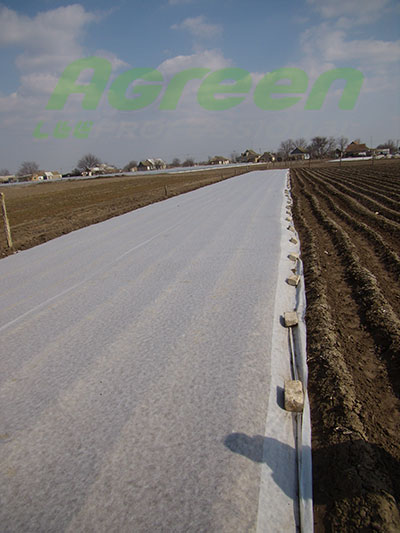
The optimal temperature for growing eggplants is
considered to be a temperature not lower than 20 °C and not higher than 28 °C.
If it is lower or higher than the specified range, then the leaves will begin
to fall.
To grow eggplant, you need soil with a high
content of minerals. One of the features of growing eggplants is flowering with
long daylight hours, at least 14 hours. By using Agreen agricultural fiber
during cultivation, you can speed up the process of growth and flowering of
eggplants.
Since the cultivation of eggplants requires compliance
with the temperature regime, it is necessary to cover the seedlings with
agrofiber immediately after planting in the soil. Agrofiber should be used with
a low density, up to 30 g / m2, so that it does not interfere with
the growth of wedding crops. The light material will rise as the eggplants
grow. When tensioned, the arofiber should be freely located above the
seedlings. The advantage of using this material is its ease of installation.
The purchased roll must be unwound and covered with a landing. Every summer
resident can easily cope with this work. There is no need to build frames or
supports to use agrofiber.
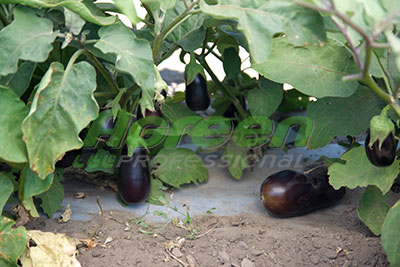
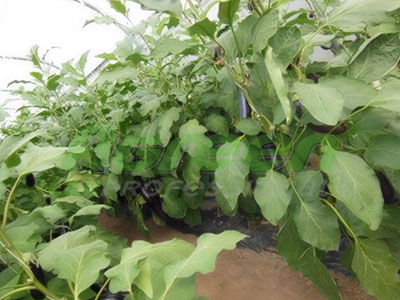
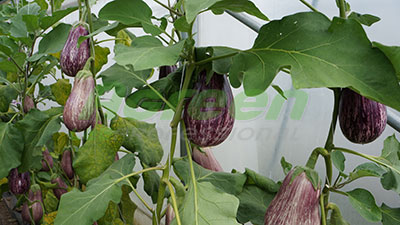
Harvesting
Technically ripe fruits can be harvested 30-40 days
after flowering. To determine whether eggplants can be harvested, you need to
pay attention to their size and color. The size of eggplants depends on their
variety. Elongated fruits have an average length of 15 cm. The weight should be
at least 200 grams. When cutting an eggplant, the seeds should be soft and
almost invisible. If solid yellow seeds appear inside, then such fruits are
considered overripe. They can be bitter to the taste, their skin is hard and
rough.
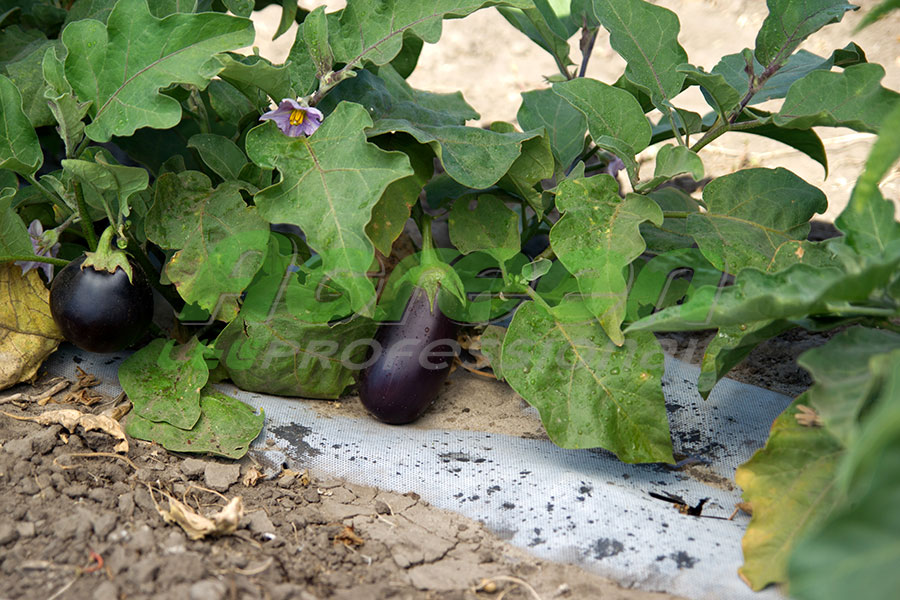
Eggplants should be cut with the stalk, the length of
which is 2-3 cm. In order not to damage the shoots of the plants, eggplants are
cut with a sharp knife. Harvest 1-2 times a week so as not to miss ripe fruits.
Care must be taken when picking, as some varieties of eggplant have cups with
spikes that are easy to prick. After harvesting, eggplants should be
immediately sent for sale. They cannot be stored for a long time and quickly
lose their marketable appearance. The use of Agreen agricultural fiber when
growing eggplants will help to increase the yield by an average of 20%.The
ripening period will also accelerate. You will be able to harvest 10-15 days
earlier than usual. This will allow you to get more profit when selling
products. In the first year of using non-woven material, you will be able to
see and appreciate all its advantages. Agrofiber can be used for several
seasons. With proper storage, the service life can be extended for a couple of
years.


